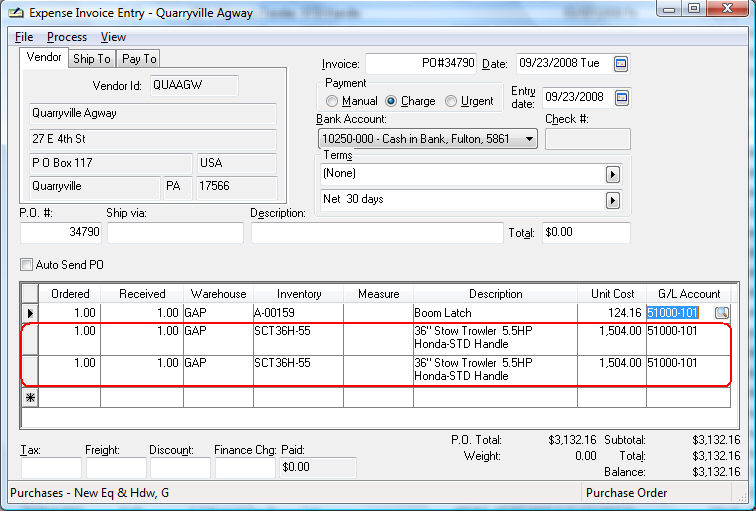
Purchasing a rental item is the most common method used to add equipment into the rental system. Processing the purchase of a serialized item is similar to purchasing any other inventory item with the addition of the following serial number entry processes. Review the Purchasing section of the Inventory manual for more details on purchasing options.
Enter a serialized item into a purchase order or expense invoice as shown below:

The 2nd and 3rd lines of the purchase order shown above contain the new rental items. Each rental item that is depreciated must be entered into separate purchase order lines. A depreciable rental asset cannot have a quantity of more than one. Notice that the information is entered into the PO using similar steps as other inventory items, with the exception of the G/L Account. The G/L Account for the rental item is a depreciable asset account since the rental item will be depreciated.
The Received column must be populated before the serial numbers for each item can be entered into the purchase order or invoice. Save the purchase order (Click File > Save) before entering serial numbers if you wish to enter product details. Right-click on each invoice line and select Depreciable Serial Numbers to enter the serial number for each rental item as shown below:
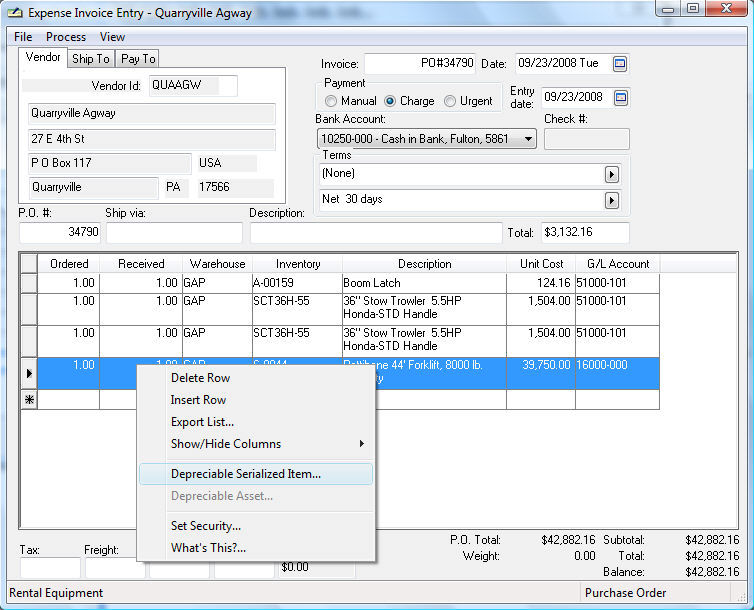
The following depreciable asset wizard will be launched if the optional EBMS depreciation module is installed:
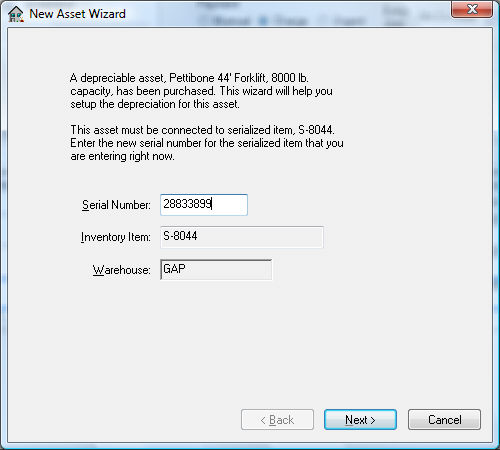
Enter the serial number for the rental item and click Next.
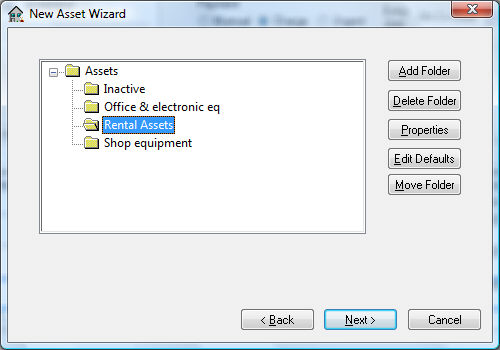
Select the asset folder that contains rental equipment and click Next.
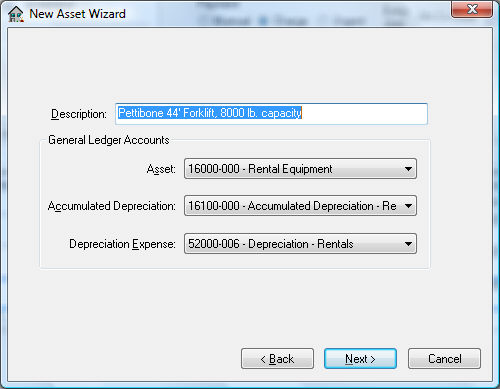
Enter an appropriate Description to identify the new asset.
Set the correct General Ledger Accounts. The Asset account will be set to the G/L Account entered within the invoice. The Accumulated Depreciation account is an asset account used to record the accumulated depreciation. The Depreciation Expense account is an expense account that records the annual depreciation. Click the Next button.
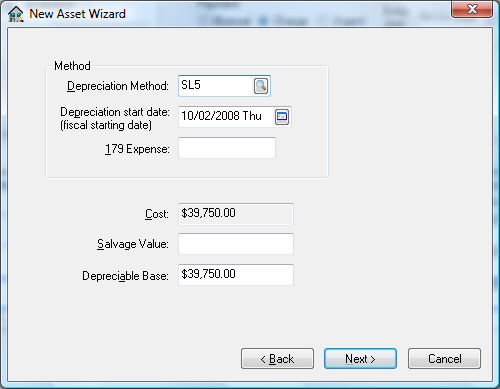
Enter a Depreciation Method by clicking on the lookup button and selecting a method. This method can be changed at a later time if a method has not been determined at this time. Review the Depreciation documentation within the main manual that is distributed with the deprecation module for more details on these settings.
The Depreciation Start Date will default to the date found on the expense invoice. The depreciation schedule will use this date to determine in which fiscal years the depreciation is scheduled.
The purchase Cost of the asset will be copied from the invoice.
Enter the estimated Salvage Value of asset at time of disposal. This amount will be deducted from the Cost to calculate the Depreciable Amount. Depreciable Amount = Cost Salvage Value.
Click the Next button to continue.
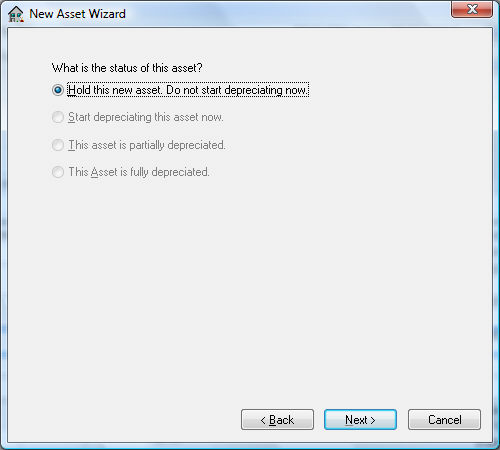
Select one of the following status options for the asset:
Hold this new asset. Do not start depreciating now. This option is the only available option if no depreciating method has been entered for this asset. The Hold option will record the asset but will not process any accumulating depreciation and is useful if the user wishes to obtain advice on the appropriate depreciation method. The asset status can be changed to a depreciating status at any time.
Start depreciating this asset now option will cause the asset to start depreciating at the time of the next Monthly Process.
This asset is partially depreciated and This Asset is fully depreciated. These options should not be used when adding new assets from an expense invoice.
Click the Next button.

Enter the Asset ID. Display asset information upon wizard completion will open the Depreciable Asset window. Click Finish to complete the wizard.
Review the Depreciation section within the main manual that is distributed with the deprecation module for more details on these settings.
Repeat this wizard process for each rental item within the purchase order or expense invoice.